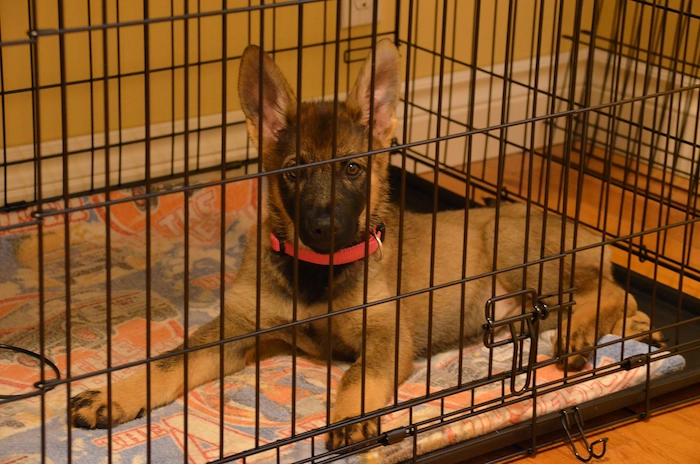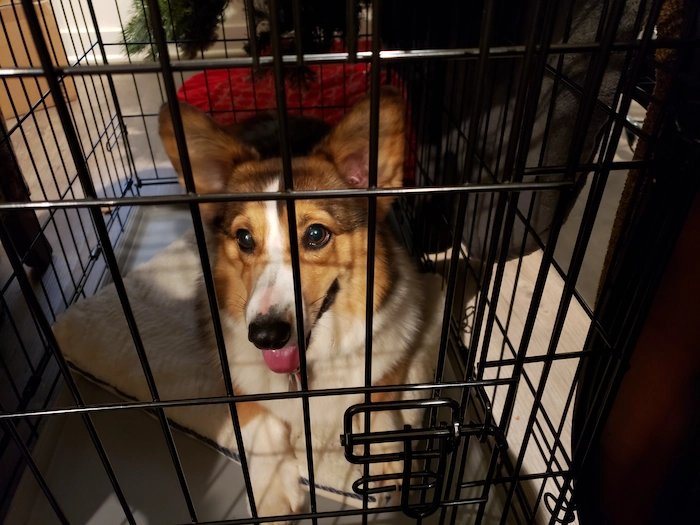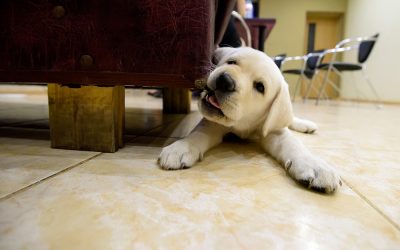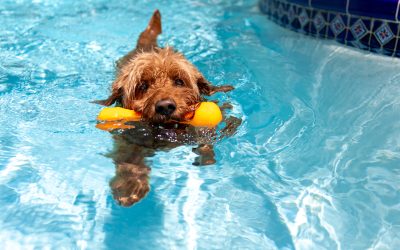Here at Halo Collar, we know that training a puppy can be a laborious task. While a Halo Collar allows you the freedom to easily take your dog to a variety of different places and environments, that may not always be in the cards while you’re away at work and taking a trip to the store. That’s why crate training your puppy is an essential task to complete in the formative stages of a dog’s life. Furthermore, after your puppy can be trusted both in and out of the crate, our GPS enabled wireless dog fence system is here to provide new opportunities of freedom for both you and your pup.
Dog owners and their new puppies (and older dogs!) can learn how to use a dog crate as a safe, comfy environment that’s exclusively theirs. Fabric and wire crates are available, and the best one for your dog will depend on its breed, size and temperament. Building positive associations with the crate can help your dog calm down in an unfamiliar or stressful situation.
Keep reading to learn why crate training works, all the benefits of crate training a puppy and eight tips on how to crate train.
Mimicking Nature: A Dog’s Crate Is Its Den
In nature, dogs are hunting animals that run in packs. When they have time to rest, they seek out dark caves and other secluded areas to sleep or relax in. In your family room, the crate can serve as a safe space, dog bed and designated area to keep your pet in while it’s learning the house rules.
With proper training, it’ll learn a routine around the crate that helps it feel safe and secure at night and when you’re out of the house for a few hours. While it takes some initial discipline and hard work, both you and your dog will have an easier life as a result of crate training your puppy.
Why Crate Train Your Dog?
Every animal has a strong sense of territory. While your dog is happy and grateful to live in your home, giving it its own little space can help fight off separation anxiety and other issues.
Other reasons pet parents should head over to their local pet supply stores and get a crate include:
1. Provides a space for your dog to retreat to when it’s tired, stressed or nervous
2. Can complement nighttime potty training procedures, as dogs tend to instinctively avoid toileting where they sleep
3. Lets you transport your dog in a familiar and convenient way
4. Offers safety and security in case you need to leave for a few hours
5. Convenient for meal times to stop your new dog begging for scraps
Preparing for Crate Training a Puppy
While you can’t train a week-old puppy to use a crate, the sooner you do it, the easier it’ll be. Getting started with crate training as soon as it enters your home or at about eight or nine weeks is ideal. It’s not a magical solution to stop a puppy from crying or “cure” separation anxiety, but when done correctly, you’ll experience lifelong benefits for your dog and your family.
The two most important things to understand are that it’s perfectly normal for your dog to make mistakes in the beginning and that you must create a positive association with the crate. It’ll take time for your pet to understand what’s expected of it, so don’t punish it or tell it off. Just be patient and focus on positive reinforcement.
The Crate Training Process for a New Puppy
Below is a quick step-by-step guide to help pet owners train a puppy to use a crate:
- Choose a crate: It’s possible to get a collapsible plastic or wire crate, as well as foldable fabric crates. Your dog must be able to comfortably stand up and turn around in its crate.
- Introduce the dog crate: Place the crate in the busiest area of the house and equip it with a soft blanket, bed and toys. First, tempt your dog to get close by placing treats near the entrance. Once it’s eaten those, place treats inside and see if it’ll go in. Don’t worry if it won’t — just repeat the process every day until it does.
- Food and yummy treats: Once your dog confidently goes in to collect treats, feed it daily meals in the crate. Begin with the crate door open. Then, after a few days, start closing it for a few minutes, until eventually it’s closed throughout meal time.
Extend crate time: Dogs that have progressed gradually through the training process tend to do best. Once your puppy starts eating meals there without any sign of distress, leave it in for 10 minutes and stay in the same room. Experiment with longer periods and leave the room until it happily stays inside for 30 minutes with you out of sight.
After this point, you can start leaving it for short periods and letting it sleep in the crate overnight. In the beginning, ensure it sleeps close to you in the crate at night. Once it’s sleeping comfortably without whining or waking, you can move the crate to a more convenient location.
Tips for Crate Training Your Puppy

Once your puppy understands what it’s supposed to do in the crate and learns that you always come back, you’ve mastered crate training. However, every dog is different; for some, it might take days, while for others, it takes weeks or months.
Use the following tips as guidance in case you hit a roadblock while crate training a puppy.
1. Make Sure Your Puppy’s Crate Is Cozy
Your dog’s crate needs to be the right size to make it feel safe and enclosed but also ensure it has enough space. Many pet owners opt to get a crate that’s sized for adult dogs and use a divider to gradually increase the available space as the puppy grows.
2. Play Lots of Crate Games With Your New Dog
While most dogs are highly food-motivated, there are other ways to create a positive association with the crate in your dog’s brain. Playing lots of games in and around the structure is a great idea. Whether fetch, chew toys or puzzle games, puppies love to play and will learn to associate the joy of playing with you with the crate.
3. Keep an Exclusive Treat Toy Inside the Crate
When you start crate training a dog, designate one very special toy that only comes out during crate time. This exclusive, amazing toy is another effective way to create happy associations between your dog’s mind and the crate.
4. Spend Time Learning the Maximum Crate Times for Dogs
Making your puppy associate happy memories with crate training is one side of the coin, but you also must avoid negative associations. One of the best ways to do this is to learn the maximum crate times by heart and aim to never exceed them.
- 8 to 10 weeks: One hour
- 11 to 14 weeks: Two hours
- 15 to 16 weeks: Four hours
- Over 17 weeks: Five hours
Keep in mind that one or two occasions beyond your control shouldn’t ruin your training efforts, but repeatedly leaving your pet in for too long likely will.
5. Never Make the Puppy Feel Like the Crate Is a Punishment
If you send your dog into its crate as a substitute for a timeout, it’ll never see it as a safe sanctuary. Likewise, abusing the crate and using it to unfairly keep your dog out of the way for long periods will create a negative association.
6. If Your Dog Whines, Don’t Let It Out
When your puppy inevitably whines to be let out, wait until it’s quiet and still before opening it up. Letting it out directly after it whines teaches the dog that it’s an effective exit strategy.
7. Try Puppy Pads for House Training
Most dogs don’t like to go to the bathroom where they sleep, so it’s unlikely they’ll use their crate mat as a bathroom. However, while your new pup is very young, you’ll need to set an alarm and take it out throughout the night. When it’s a little older and fully crate trained, you might leave the door open and place a puppy pad in a designated area to avoid waking up at night.
8. Cover the Crate
If your dog’s crate is see-through, consider covering it over with a blanket so it’s more in-line with the type of den it’d retreat to in the wild. Plus, being in a darker space is likely to help it relax and fall asleep more quickly.
Keep Your Puppy or Adult Dog Comfortable and Safe With Halo Collar
Making sure you go the extra mile to train your dog is one of the best ways to keep them safe. For dogs 5 months and older, you can count on Halo Collar to help you safely train your furry companions. Find out more about how our line of GPS Wireless Dog Fence can keep your dog safe everywhere you go.










